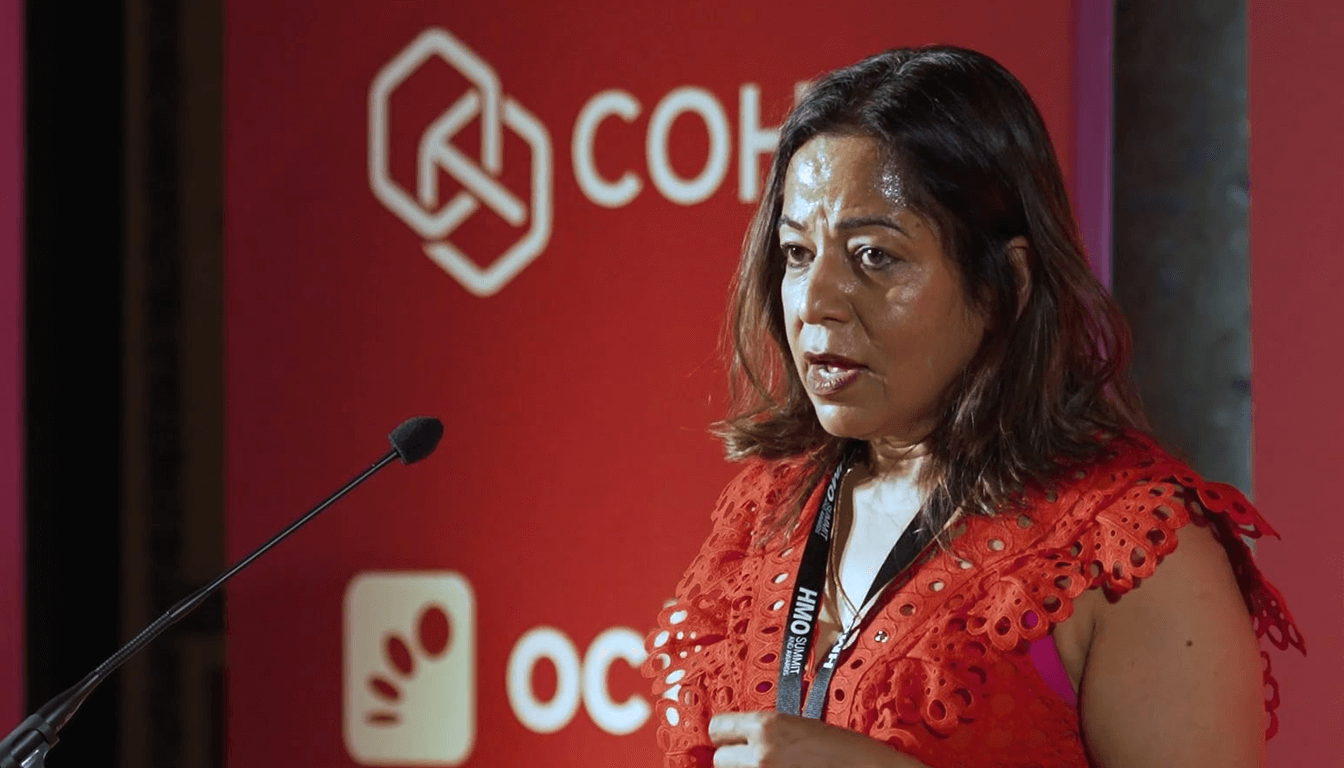Planning is one of those unavoidable realities in property: when it works, you barely notice it; when it goes wrong, it becomes a months-long migraine and a budget black hole. Mahsa Ige’s whistle-stop tour at the HMO Summit was a gentle but sharp reminder that planning isn’t a bureaucratic gate that hates HMOs,it’s a system with objectives you can speak to, and if you learn that language and design your project around it, your chance of approval (and of fewer headaches) goes way up.
What planning is,and why that matters to your HMO
At heart, the planning system exists to control land use for sustainable development. That phrase sounds abstract, but in practice it means councils balance environmental, social and economic aims: new homes, public amenity, local character, transport, energy efficiency and more. If your proposal can demonstrably help the council meet those goals,without creating unacceptable local harm,it has a much better chance of success.
Framing your scheme as part of a local sustainability story matters. HMOs are often seen through a narrow lens,noise, anti-social behaviour, density,but many people genuinely prefer shared housing: students, early-career professionals, shift workers and people who need affordable, flexible accommodation. Your job in a planning submission is to make that case clearly and calmly: show how your HMO provides housing choice, supports local workforce needs, and improves or repairs housing stock.
The first defensive move: read the local plan, then read it again
A surprising number of refusals begin because someone didn’t check the local plan properly before they bought. Planning policies vary dramatically between councils. Some places restrict the number of HMOs on a street via a radius or percentage rule; others apply minimum original dwelling sizes or require minimum EPC ratings; many councils now have Article 4 directions or additional HMO licensing that change the rules overnight.
Take Mahsa’s Bristol example as a cautionary tale. Some councils prohibit “sandwiching” (an HMO next to a family house with an HMO on the other side) or limit the percentage of houses on a street that can convert to HMOs. Other areas impose a 100-metre radius test that caps HMO density. If your prospective building is inside one of those areas and you fail the policy test, your application starts life on the back foot. Before you bid, open the local plan, find the HMO policy and the evidence base (strategic housing market assessment), and map out the relevant constraints. This is not optional homework; it is core due diligence.
Talk the council’s language: sustainable development in plain terms
When you write your planning statement, don’t rely on platitudes. Councils want evidence and specificity. If the local plan frames its objectives around “sustainable development,” show how your project contributes to the three dimensions of sustainability: social, economic and environmental. For social value, demonstrate how the HMO meets a local housing need (for workers, students, carers), cite relevant labour market or university catchment demand where possible, and outline how your proposal avoids harm to immediate neighbours (sound insulation, waste management, mature tenancy management plans). For economic value, show how tenants will support local shops and services and how construction will generate local spend. For environmental value, point to energy efficiency improvements, retrofit measures, or solar/heat pump proposals where you can.
This means your planning statement becomes a story: not “we want more rooms,” but “we will provide X dwellings of Y quality, improving energy performance from EPC D to EPC B, reducing management-related calls by Z% through a resident handbook and on-call support.” Concrete commitments beat vague assurances.
Engage early,with neighbours and officers
A big theme in Mahsa’s talk was communication. The consultation phase is public and emotional: your neighbours will interpret a planning notice through their own fears about noise or rubbish. The simple, effective answer is to engage before you submit: knock on doors, explain the project, invite questions, and record those conversations. If you can show the planning officer that you made genuine efforts to address local concerns,and that you altered the design in response to neighbour feedback,that narrative weighs heavily in your favour.
Equally important is early engagement with the planning officer. A pre-application enquiry can seem like a cost or delay, but it’s an investment. Pre-app advice gives you clarity about likely objections, necessary studies, and local expectations. It also starts a relationship with the officer who will later review your file. If pre-app is not appropriate, at least drop a neutral, professional enquiry to the duty planner and ask for their advice on key policy points: concentration, use class concerns, and specific validation requirements.
Patience pays here: constant chasing after you submit rarely helps and can even irritate an overworked officer. Make a considered contact plan and file your application cleanly.
Validation: get your paperwork married with the policy
Councils increasingly require more documents at validation stage. Aside from the usual floor plans and planning statement, you should check whether the local authority expects an energy statement, daylight/sunlight report, noise assessment, waste management plan, travel plan or a landlord management plan. Many councils now also request evidence on EPCs and fabric improvements. Failing to submit everything on the validation checklist will delay your application and increase risk.
Keep a folder of supplier quotes, tenant management plans, and test results handy,even if you’re applying under permitted development where formal planning might not be required today, this evidence becomes invaluable later when you want to escalate to a full application or defend your position.
Practical design and operational commitments that make approval easier
Mahsa emphasised that the planning officer is assessing real impacts. The following practical measures are worth showing in a submission because they address predictable concerns:
- Robust waste and recycling strategy that prevents bins overflowing and sets collection points.
- Clear cycle and car parking proposals that reflect site context and local transport policies.
- Sound insulation and management measures to limit disturbance between rooms and to neighbours.
- A resident handbook and on-call phone number that demonstrate how you will manage antisocial behaviour,and a commitment to swift remediation.
- Energy-efficiency improvements (EPC uplift, low-energy lighting, and where feasible renewable tech) that align with local environmental objectives.
Each commitment should be stated as an operational standard you will uphold,not a vague promise. If your resident handbook includes quiet hours, a cleaning rota, and a named property manager, include an excerpt in the submission to show you’ve already thought through operational risk.
Dealing with restrictive policies: ways to respond, not gamble
If policy looks hostile,a 120sqm minimum, a saturation cap, or a strict Article 4 area,you have options. You can walk away, look for sites in more permissive wards, or design a scheme that avoids falling foul of the policy. Sometimes the right approach is to reduce the number of occupants, improve the quality of communal space, or demonstrate a local need that your scheme addresses (evidence from employers or universities can be persuasive). In marginal cases, a pre-app conversation can reveal flex points: does the council treat a kitchenette differently from a full kitchen? Is a non-fixed cooking solution acceptable? Those nuances are where consultants earn their fees.
Time, money and the reality of contingencies
Planning takes calendar time and emotional energy. Factor in pre-app, neighbour engagement, a typical six-to-twelve-week consultation period (longer if complex), and the potential for conditions or a refusal that needs addressing. Budget for consultants and a sensible contingency in both time and cost. Mahsa’s practical advice to “keep a record of improvements” is strategic: if you improve a property’s EPC or local environment now, that favourable track record helps future applications.
Keep the long game in mind
Even if you’re using permitted development or a quick conversion route, think in multi-project terms. Council officers remember reliable applicants. Evidence of good tenancy management, low complaint rates, and energy improvements builds goodwill that helps subsequent applications. Treat planning not as a single hurdle but as a reputational process.
Final takeaway: planning is a conversation; learn its language and tell a complete story
The most useful lesson from Mahsa’s session is deceptively simple: planning is not a brick wall; it’s a structured conversation the council uses to decide whether a development fits their local needs. If you speak their language,sustainable development, local housing need, mitigation of harm,and you can demonstrate through design and management how your HMO contributes to the local economy and environment, you remove the mystery and replace it with credibility.
If you’d like a ready-to-use tool to turn this into action, I can prepare a one-page “Pre-Purchase Planning Scorecard” that guides you on the five questions to answer before you bid (local policy flags, HMO density checks, EPC baseline, likely validation documents, and a pre-app trigger checklist). Say the word and I’ll draft it up so you can apply it at site visits.
Planning doesn’t have to be misery. It rewards homework, humility, and clear communication,and when you get it right, it makes your HMO more resilient, more valuable and
Planning is one of those unavoidable realities in property: when it works, you barely notice it; when it goes wrong, it becomes a months-long migraine and a budget black hole. Mahsa Ige’s whistle-stop tour at the HMO Summit was a gentle but sharp reminder that planning isn’t a bureaucratic gate that hates HMOs,it’s a system with objectives you can speak to, and if you learn that language and design your project around it, your chance of approval (and of fewer headaches) goes way up.
What planning is,and why that matters to your HMO
At heart, the planning system exists to control land use for sustainable development. That phrase sounds abstract, but in practice it means councils balance environmental, social and economic aims: new homes, public amenity, local character, transport, energy efficiency and more. If your proposal can demonstrably help the council meet those goals,without creating unacceptable local harm,it has a much better chance of success.
Framing your scheme as part of a local sustainability story matters. HMOs are often seen through a narrow lens,noise, anti-social behaviour, density,but many people genuinely prefer shared housing: students, early-career professionals, shift workers and people who need affordable, flexible accommodation. Your job in a planning submission is to make that case clearly and calmly: show how your HMO provides housing choice, supports local workforce needs, and improves or repairs housing stock.
The first defensive move: read the local plan, then read it again
A surprising number of refusals begin because someone didn’t check the local plan properly before they bought. Planning policies vary dramatically between councils. Some places restrict the number of HMOs on a street via a radius or percentage rule; others apply minimum original dwelling sizes or require minimum EPC ratings; many councils now have Article 4 directions or additional HMO licensing that change the rules overnight.
Take Mahsa’s Bristol example as a cautionary tale. Some councils prohibit “sandwiching” (an HMO next to a family house with an HMO on the other side) or limit the percentage of houses on a street that can convert to HMOs. Other areas impose a 100-metre radius test that caps HMO density. If your prospective building is inside one of those areas and you fail the policy test, your application starts life on the back foot. Before you bid, open the local plan, find the HMO policy and the evidence base (strategic housing market assessment), and map out the relevant constraints. This is not optional homework; it is core due diligence.
Talk the council’s language: sustainable development in plain terms
When you write your planning statement, don’t rely on platitudes. Councils want evidence and specificity. If the local plan frames its objectives around “sustainable development,” show how your project contributes to the three dimensions of sustainability: social, economic and environmental. For social value, demonstrate how the HMO meets a local housing need (for workers, students, carers), cite relevant labour market or university catchment demand where possible, and outline how your proposal avoids harm to immediate neighbours (sound insulation, waste management, mature tenancy management plans). For economic value, show how tenants will support local shops and services and how construction will generate local spend. For environmental value, point to energy efficiency improvements, retrofit measures, or solar/heat pump proposals where you can.
This means your planning statement becomes a story: not “we want more rooms,” but “we will provide X dwellings of Y quality, improving energy performance from EPC D to EPC B, reducing management-related calls by Z% through a resident handbook and on-call support.” Concrete commitments beat vague assurances.
Engage early,with neighbours and officers
A big theme in Mahsa’s talk was communication. The consultation phase is public and emotional: your neighbours will interpret a planning notice through their own fears about noise or rubbish. The simple, effective answer is to engage before you submit: knock on doors, explain the project, invite questions, and record those conversations. If you can show the planning officer that you made genuine efforts to address local concerns,and that you altered the design in response to neighbour feedback,that narrative weighs heavily in your favour.
Equally important is early engagement with the planning officer. A pre-application enquiry can seem like a cost or delay, but it’s an investment. Pre-app advice gives you clarity about likely objections, necessary studies, and local expectations. It also starts a relationship with the officer who will later review your file. If pre-app is not appropriate, at least drop a neutral, professional enquiry to the duty planner and ask for their advice on key policy points: concentration, use class concerns, and specific validation requirements.
Patience pays here: constant chasing after you submit rarely helps and can even irritate an overworked officer. Make a considered contact plan and file your application cleanly.
Validation: get your paperwork married with the policy
Councils increasingly require more documents at validation stage. Aside from the usual floor plans and planning statement, you should check whether the local authority expects an energy statement, daylight/sunlight report, noise assessment, waste management plan, travel plan or a landlord management plan. Many councils now also request evidence on EPCs and fabric improvements. Failing to submit everything on the validation checklist will delay your application and increase risk.
Keep a folder of supplier quotes, tenant management plans, and test results handy,even if you’re applying under permitted development where formal planning might not be required today, this evidence becomes invaluable later when you want to escalate to a full application or defend your position.
Practical design and operational commitments that make approval easier
Mahsa emphasised that the planning officer is assessing real impacts. The following practical measures are worth showing in a submission because they address predictable concerns:
- Robust waste and recycling strategy that prevents bins overflowing and sets collection points.
- Clear cycle and car parking proposals that reflect site context and local transport policies.
- Sound insulation and management measures to limit disturbance between rooms and to neighbours.
- A resident handbook and on-call phone number that demonstrate how you will manage antisocial behaviour,and a commitment to swift remediation.
- Energy-efficiency improvements (EPC uplift, low-energy lighting, and where feasible renewable tech) that align with local environmental objectives.
Each commitment should be stated as an operational standard you will uphold,not a vague promise. If your resident handbook includes quiet hours, a cleaning rota, and a named property manager, include an excerpt in the submission to show you’ve already thought through operational risk.
Dealing with restrictive policies: ways to respond, not gamble
If policy looks hostile,a 120sqm minimum, a saturation cap, or a strict Article 4 area,you have options. You can walk away, look for sites in more permissive wards, or design a scheme that avoids falling foul of the policy. Sometimes the right approach is to reduce the number of occupants, improve the quality of communal space, or demonstrate a local need that your scheme addresses (evidence from employers or universities can be persuasive). In marginal cases, a pre-app conversation can reveal flex points: does the council treat a kitchenette differently from a full kitchen? Is a non-fixed cooking solution acceptable? Those nuances are where consultants earn their fees.
Time, money and the reality of contingencies
Planning takes calendar time and emotional energy. Factor in pre-app, neighbour engagement, a typical six-to-twelve-week consultation period (longer if complex), and the potential for conditions or a refusal that needs addressing. Budget for consultants and a sensible contingency in both time and cost. Mahsa’s practical advice to “keep a record of improvements” is strategic: if you improve a property’s EPC or local environment now, that favourable track record helps future applications.
Keep the long game in mind
Even if you’re using permitted development or a quick conversion route, think in multi-project terms. Council officers remember reliable applicants. Evidence of good tenancy management, low complaint rates, and energy improvements builds goodwill that helps subsequent applications. Treat planning not as a single hurdle but as a reputational process.
Final takeaway: planning is a conversation; learn its language and tell a complete story
The most useful lesson from Mahsa’s session is deceptively simple: planning is not a brick wall; it’s a structured conversation the council uses to decide whether a development fits their local needs. If you speak their language,sustainable development, local housing need, mitigation of harm,and you can demonstrate through design and management how your HMO contributes to the local economy and environment, you remove the mystery and replace it with credibility.
If you’d like a ready-to-use tool to turn this into action, I can prepare a one-page “Pre-Purchase Planning Scorecard” that guides you on the five questions to answer before you bid (local policy flags, HMO density checks, EPC baseline, likely validation documents, and a pre-app trigger checklist). Say the word and I’ll draft it up so you can apply it at site visits.
Planning doesn’t have to be misery. It rewards homework, humility, and clear communication,and when you get it right, it makes your HMO more resilient, more valuable and









